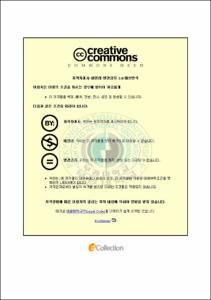Inorganic zinc shop primer의 鎔接性 向上을 위한 硏究
- Alternative Title
- A study of composition to improve weldability of Inorganic Zinc Shop Primer
- Abstract
- Shop primer is applied immediately to the blast-cleaned steel surface after removing every foreign matter of mill scale, rust, and so on. It is for temporary protection against corrosion during fabrication, transport, installation and storage of large constructions such as ship buildings, bridges, off-shore structures, oil storage tanks, and so on.
Since the late 1970’s, current inorganic zinc rich primer that has excellent welding, gas-cutting, anti-corrosion properties is using most plentifully in large constructions of new shipbuilding etc.
Recently, it is needed the stability of welding property to improve the long-term a durability of the constructions in high speed and high temperature as well as the anti-corrosive property that has been demanded.
To minimize a welding defects of inorganic zinc rich shop primer, we investigated compositions of shop primer, such as the content of organic and inorganic binder, zinc dust, additive, catalyst and type of extender, solvent,
As a result, when the content of zinc dust is low, the number of welding defects decreased. But we have to keep the content of zinc dust at least 70% in solid for the anti-corrosion property in fabrication period.
The extender pigment having no water of crystallization and heat-resisting property resulted in good weldability.
As the content of organic binder in compositions of shop primer increases, the number of welding defects on the surface of welded steel was increased.
As the thickness of shop primer coating increases, the defects in welding part were increased
The solvent composition of the base should be considered for application propriety at shop line.
- Issued Date
- 2008
- Awarded Date
- 2008. 8
- Type
- Dissertation
- Keyword
- Welding inorganic zinc zinc dust anti-corrosive
- Publisher
- 부경대학교 산업대학원
- Alternative Author(s)
- Kim, Hyun Myung
- Affiliation
- 부경대학교 산업대학원
- Department
- 산업대학원 공업화학학과
- Advisor
- 박진환
- Table Of Contents
- 1. 서론 = 1
2. 이론적 배경 = 3
2-1. 무기질 아연말 도료의 개요 = 3
2-2. 무기질 아연말 도료의 분류 = 3
2-2-1. 후경화형(수용성) = 4
2-2-2. 자기경화형(수용성) = 5
2-2-3. 자기경화형(용제형) = 6
2-2-4. Zinc silicate coating의 경화 구조 = 8
2-3. 무기질 아연말 전처리 도료의 요구 물성 = 9
2-4. 무기질 아연말 전처리 도료의 조성 이해 = 10
2-4-1. 용제 = 10
2-4-2. 촉매 = 11
2-4-3. 안료 = 11
2-4-4. 첨가제 = 13
2-5. Silicate 가수분해 Mechanism = 13
2-5-1. Ethyl silicate의 기본 = 13
2-5-2. 가수분해 = 14
2-5-3. 일부 가수분해 = 15
2-5-4. 가수분해도 = 16
2-5-5. Ethyl silicate 40 = 17
2-5-6. Binder의 제조공정 = 17
3. 실험 = 19
3-1. 실험 방법 = 19
3-1-1. 용접성 시험 = 19
3-1-2. 방청성 시험 = 22
3-2. Inorganic zinc shop primer의 제조 = 22
3-2-1. 사용 원료 = 22
3-2-2. Shop primer의 제조 = 23
4. 결과 및 고찰 = 30
4-1. Shop primer의 조성에 따른 용접성 시험 결과 = 30
4-1-1. 징크 Dust 함량에 따른 비교 = 30
4-1-2. 첨가제의 종류에 따른 비교 = 31
4-1-3. 체질안료의 종류에 따른 비교 = 33
4-1-4. 무기질 수지의 함량변화에 따른 비교 = 35
4-1-5. 가수분해도 차이에 따른 비교 = 37
4-1-6. 촉매의 종류 및 함량에 따른 비교 = 39
4-1-7. 용제의 종류에 따른 비교 = 40
4-1-8. 도막 두께에 따른 비교 = 41
4-2. Zinc Dust 함량에 따른 방청성 시험 결과 = 42
5. 결론 = 44
References = 45
- Degree
- Master
- Files in This Item:
-
-
Download
 Inorganic zinc shop primer의 鎔接性 向上을 위한 硏究.pdf
기타 데이터 / 2.19 MB / Adobe PDF
Inorganic zinc shop primer의 鎔接性 向上을 위한 硏究.pdf
기타 데이터 / 2.19 MB / Adobe PDF
-
Items in Repository are protected by copyright, with all rights reserved, unless otherwise indicated.